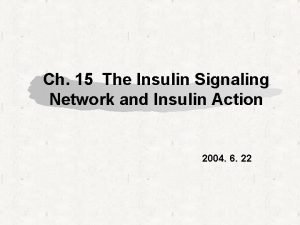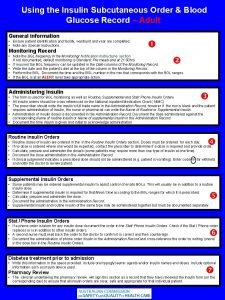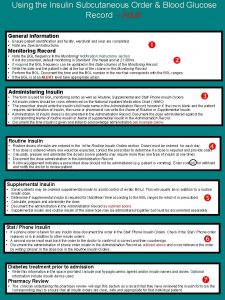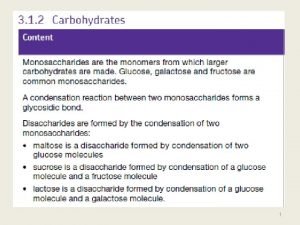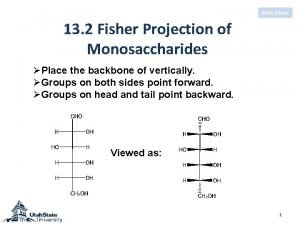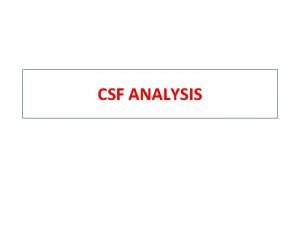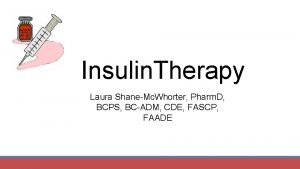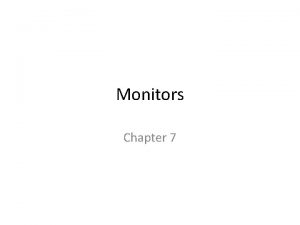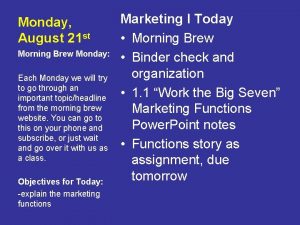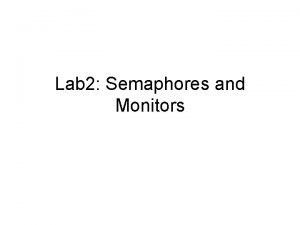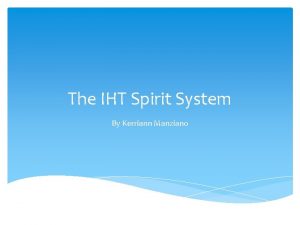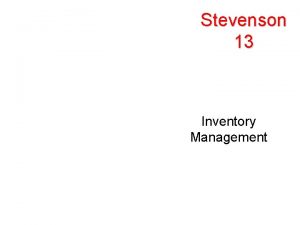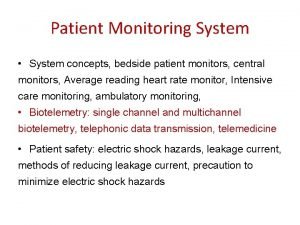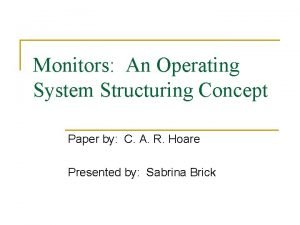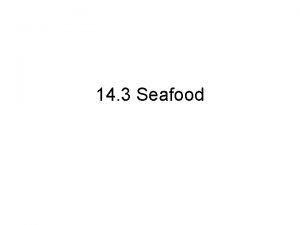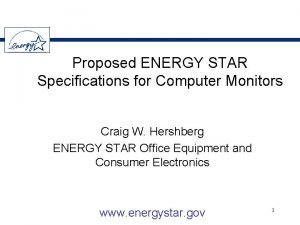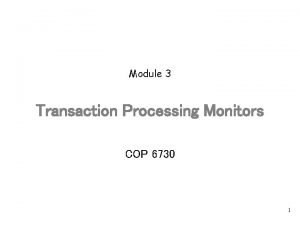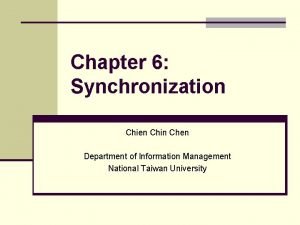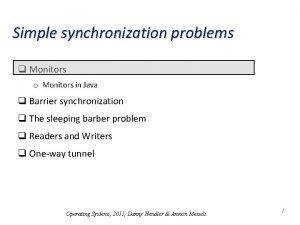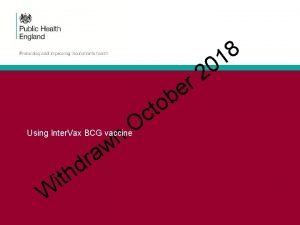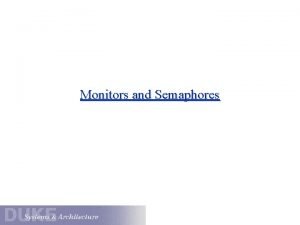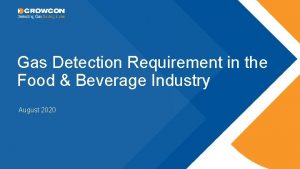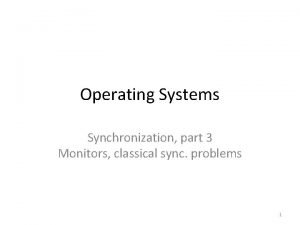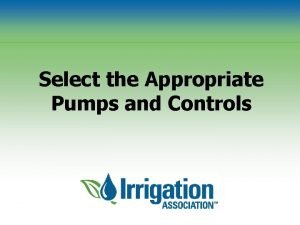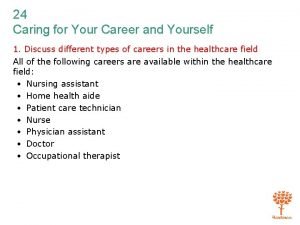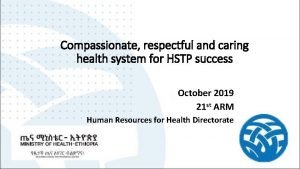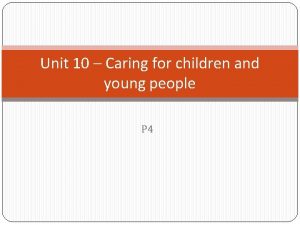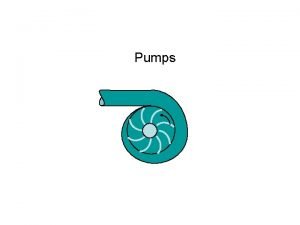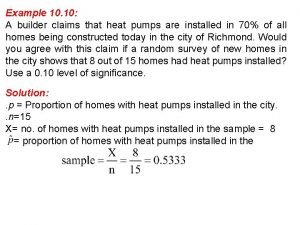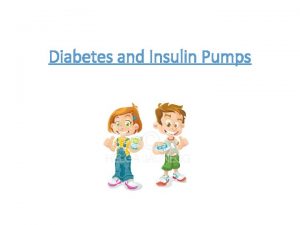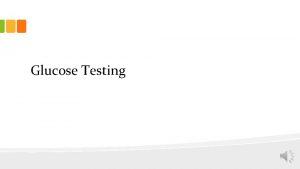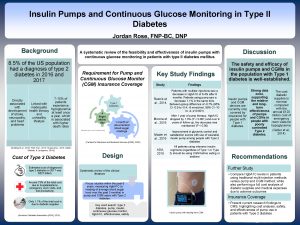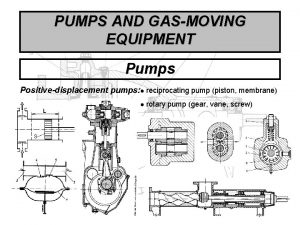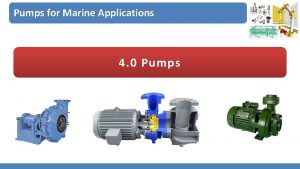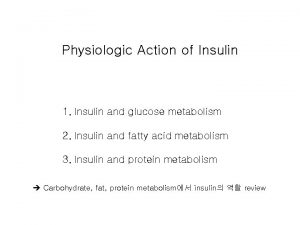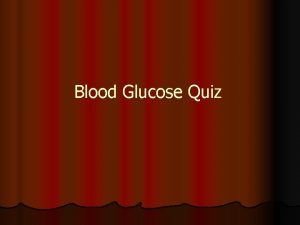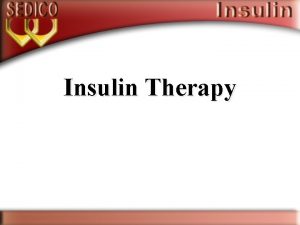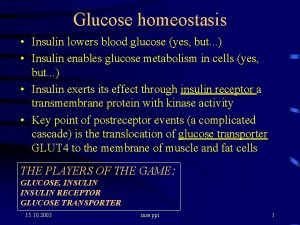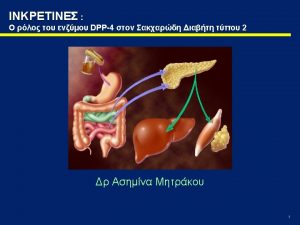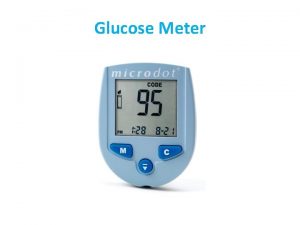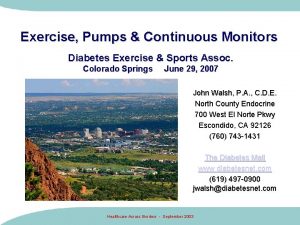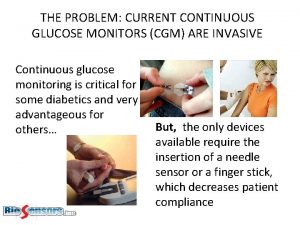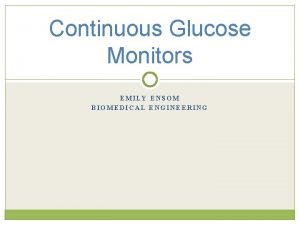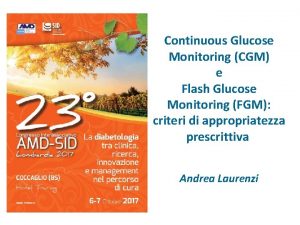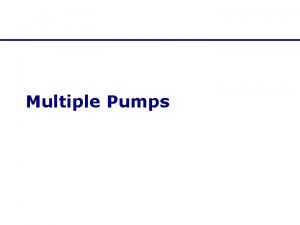Caring For Insulin Pumps and Continuous Glucose Monitors



















































- Slides: 51

Caring For Insulin Pumps and Continuous Glucose Monitors at School Melissa Ashdown BSN, CDE, CPT G. Denise Cooks, MSN, CPNP-PC, CDE, CPT

Objectives • Understand the difference between Continuous Glucose Monitors and Insulin Pumps • Describe hyperglycemia and hypoglycemia • Identify causes of hyperglycemia and hypoglycemia • Discuss signs and symptoms of hyperglycemia and hypoglycemia • List treatment options for hyperglycemia & hypoglycemia

Continuous Glucose Monitor (CGM) Freestyle Libre Tandem t: slim X 2 Insulin Pump with Dexcom G 6 (Basal IQ Technology) Dexcom G 6 Medtronic Insulin Pump with the Guardian CGM

CGM Monitoring • • Has a small sensor under the skin, that reads the glucose in the interstitial fluid It is not a blood glucose They will rarely read the same but should be within 20% Provides real time sensor glucose reading values that are updated every 5 minutes (up to 288 times per day)

CGM Monitoring • Used as a tool to assist with blood glucose monitoring • Does not replace finger-stick for all models • Do not use CGM readings to treat low/high blood glucose • If the sensor glucose reads less than 70 or above 300 must confirm with a blood glucose finger-stick

CGM Monitoring • • The medical management plan will have a check mark next to the CGM brand the patient is currently wearing Refer to pages 4 -5 of the medical management plan to determine if the sensor readings are able to be used for dosing FDA has only approved dosing with a Dexcom G 6 If using the sensor reading for dosing, you must enter the reading into the insulin pump for calculations to be completed

CGM Monitoring Scenario Leslie comes to the health room complaining of a headache and she is pale. Her CGM reading is 56. • What is the next step? • Does she require a finger stick?

CGM Monitoring Scenario Mark comes to the health room before lunch. He is wearing the Dexcom G 6 CGM and has the Omnipod 400 insulin pump. The readings before lunch on the CGM says 183. • Can you use this for dosing? • Does he require a finger stick?

CGM Monitoring Scenario Anna comes to the health room before leaving school. She has the Medtronic 670 G insulin pump and wears the Guardian sensor. On the screen of the insulin pump you notice the CGM reading is 152 with one arrow down. • Can you use this reading? • Does she require a finger stick? • Can she get on the bus?

Insulin Pumps Omnipod 400 Tandem t: slim X 2 Insulin Pump with Dexcom G 6 (Basal IQ Technology) Omnipod DASH Medtronic Insulin Pump with the Guardian CGM

Insulin Pumps • Deliver insulin very similar to how the normal pancreas does • Programmed to deliver basal and bolus doses • Uses only rapid acting insulin (Novolog, Humalog, Apidra) The patient will always have a prescription for a long lasting insulin to be used in case of insulin pump failure

Understanding Basal Dosing Basal Rate • Programmed to deliver a continuous flow of insulin in small increments throughout the day and night • This rate can be increased or decreased according to individual needs • Measured in unit(s) per hour continuously over 24 hours • Takes the place of long acting insulin

Understanding Bolus Dosing Bolus • Given on demand • Covers carbohydrate intake for meals and snacks • Given to correct high blood glucose readings

Understanding Bolus Dosing The insulin pump is programmed with the following individual settings to calculate doses based on food intake and blood glucose levels: • • Target blood glucose Insulin sensitivity or correction factor Insulin to carbohydrate ratio Active insulin time or insulin on board (IOB) The pump takes all of these settings into account for bolus dose calculations

Active Insulin / Insulin on Board • • • It takes 3 – 4 hours for the body to use an entire bolus dose The pump will remember how much insulin is still working in the body and will subtract this amount from the next bolus This will prevent “insulin stacking” which could lead to hypoglycemia Example: Carbohydrate bolus 3 units Correction bolus +2 units Active insulin/ IOB -1 unit Total bolus recommended 4 units *This is why the calculations on the pump differ from yours*

Insulin Pumps Tandem t: slim X 2 with Basal-IQ Technology • • If using the sensor reading at the meal time enter the reading in the bolus screen for dosing If sensor glucose below 70 or above 300 confirm with a finger-stick Basal IQ - Predicts ahead 30 minutes, if the sensor glucose will be 80 mg/d. L or below Suspends basal insulin to help avoid hypoglycemia Resumes basal insulin automatically once glucose starts to rise If Basal IQ is active at a meal time, you will have to cancel it before it will allow you to put in the blood glucose and carbohydrates for dosing Basal IQ is only available if they are wearing the Dexcom G 6

Insulin Pumps Medtronic 630 G and 670 G with Guardian sensor • • • Guardian CGM is not FDA approved for meal time dosing at this time Still needs a blood glucose check via finger-stick Enter under Bolus Wizard 670 G with Auto. Mode: (automatically adjusts basal insulin delivery every 5 minutes based on sensor glucose levels) if wearing the CGM 630 G Safe Guard Feature: will suspend when the low limit is reached if wearing the CGM cannot be transmitted to a cell phone

Insulin Pumps Omnipod 400 and Omnipod DASH • • • Omnipod 400: Integrated meter (Freestyle), Remote bolus from Personal Diabetes Monitor (PDM) within 5 feet, No tubing Omnipod DASH: Touch screen (PDM), Rechargeable battery - charge daily (PDM), Contour Next One blood glucose meter, Food library with more than 80, 000 food items, No tubing Not integrated with any CGM at this time. If the patient is wearing a CGM that can be used for dosing, you must enter it in the bolus calculator for correct calculations to be completed

Hyperglycemia Symptoms

Hyperglycemia Causes of Hyperglycemia • • • Illness Underestimated carbohydrates and bolus Pump cartridge/reservoir empty Cannula kinked/occluded under the skin Insulin pump malfunction Leak in the infusion set tubing • • Stress Low batteries Insulin is old/hot Other medications Forgot to bolus Not rotating pump sites Infusion set/Pod has exceeded 72 hours

Hyperglycemia • Check for ketones if blood sugar if greater than 250 mg/dl and/or student complains of nausea/vomiting, stomach ache, or is feeling ill • Students should have access to water – May be added to 504 plan • Students are not to miss class by sitting in the nurses’ office or sent homeunless nausea/vomiting or feeling ill • Refer to page 6 of the Medical Management Plan for hyperglycemia treatment when using an insulin pump

Hyperglycemia • A common cause of hyperglycemia is an occluded/bent cannula • People wearing insulin pumps can develop diabetic ketoacidosis (DKA) within 4 hours if there is a problem with the delivery of insulin from the insulin pump • Remember…NEVER disconnect or suspend the insulin pump for longer than one hour

Treatment of Hyperglycemia for Insulin Pump Therapy • When wearing an insulin pump a correction bolus can be given every 2 hours if needed to treat hyperglycemia, and to help get ketones out of the body • The insulin pump has an Insulin on Board/Active Insulin feature that will prevent stacking insulin doses • Check for Ketones with every void if blood glucose above 250

Treatment of Hyperglycemia for Insulin Pump Therapy – If the student has 2 consecutive blood sugar readings greater than 250 mg/dl and there is no reasonable explanation: • The student will need to change the pump infusion set/Pod, and use new insulin • If the student can not do this independently, call the parent • This could be a sign of a bad insulin pump site

Treatment of Hyperglycemia for Insulin Pump Therapy Loss of Infusion Site: (Marked independent) • • Refer to page 5 of the Medical Management Plan Remove the insulin pump site/pod Independent students with supplies may reinsert infusion set Recheck blood glucose in two hours to ensure proper placement

Treatment of Hyperglycemia for Insulin Pump Therapy Loss of Infusion Site: (Not marked independent) • • • Refer to page 5 of the Medical Management Plan Remove the insulin pump site/pod Notify caregivers to see if they are able to administer long acting insulin or if they can come to the school to replace the pump site If you have their long acting insulin you may administer it (Give as immediately as you can) If you do not have long lasting insulin, or the family is unable to come to the school then you can begin manual insulin injections by syringe or pen

Treatment of Hyperglycemia for Pump Therapy Manual Injections: If you have to administer rapid acting insulin via syringe/pen due to a bad site or insulin pump failure • Carbohydrate ratio and correction factor doses will be the same on the prescriber authorization form (You can continue to use the same form) • Remember you must wait 3 hours between correction dose administration while on injections • Give meal dose as scheduled

Treatment of Hyperglycemia for Insulin Pump Therapy For Pump Failure: • Remove pump and resume insulin injections by syringe or pen • Rapid acting insulin may be administered by syringe/pen injection for insulin to carbohydrate ratio and correction factor doses • Refer to the Prescriber Authorization form for dosing • Remember: No insulin on board with injections, must wait 3 hours between correction doses • Notify caregiver so (long acting insulin) can be administered if possible • Do not allow student to “graze” • Meal doses may be given as scheduled • No need for student to go home, unless moderate to large ketones with nausea and/or vomiting

Treatment of Hyperglycemia for Pump Therapy Moderate to Large Ketones with Nausea and Vomiting: • Give correction bolus using insulin pen/syringe • Remember to input bolus into pump for insulin on board – do not give bolus to the patient through insulin pump • Run bolus into the trash (For Insulin on Board) • Student will need to change infusion set, site/pod and refill with new insulin; call parent if student cannot do this independently • This child should go home • If you cannot get in touch with the parents contact our diabetes doctor oncall for pump calls: 205 -638 -9107 or after hours 205 -638 -9100

Scenario • Grant’s diabetes is managed by an insulin pump. His current blood sugar is 278. His last correction bolus was 2 hours ago. When can he have another correction bolus?

Response • • Correction bolus can be given now Insulin pumps have insulin on board feature, which calculates to prevent the stacking of insulin doses

Scenario • Eli comes to you from the playground after being tackled by another student. The screen on his insulin pump is shattered and the pump is not delivering insulin. How should you proceed?

Response: • • • Remove pump Notify caregiver so long lasting insulin can be administered Rapid acting insulin may be administered using syringe or pen for insulin to carbohydrate and correction factor doses Correction doses must be given 3 hours apart, but meal doses may be given as scheduled Student does not need to go home

Scenario • Karen ate lunch at 12: 15 pm. Her blood sugar was 148 and she received a correction dose at that time. It is now 1: 45 pm and the class is having a party with pizza and ice cream. • Can the student participate in the party? • Can she get insulin for the party food? • Does she need to check another blood glucose?

Response: • Yes the student can participate and get insulin for the food eaten at the party • Remember students can get rapid acting insulin for carbohydrates as often as they eat • No need to check a blood glucose since it has not been two hours since the last correction was given • You will only enter in the carbohydrates to be eaten

Symptoms of Hypoglycemia

Hypoglycemia on Insulin Pump Causes of Hypoglycemia • Miscalculated carbohydrates • Too few carbohydrates consumed for the amount of insulin given • Basal rate set too high • Exercise or unusually high activity

Treatment of Hypoglycemia for Insulin Pump Therapy Treatment of Mild Low Blood Sugar • • Refer to page 8 in the Medical Management Plan Rule of 15 If blood glucose is still below age specified range after first treatment retreat with 15 grams fast acting sugar and suspend the insulin pump Recheck blood glucose in 15 minutes Repeat steps until blood glucose is above age specified range Once blood glucose is above age specified give 15 grams carbohydrate snack with protein Remember to resume pumping

Treatment of Hypoglycemia for Insulin Pump Therapy Treatment of Low Blood Sugar at Lunch • • • If blood sugar is greater than 60 mg/dl, bolus may be given after lunch Bolus must be given within 30 minutes of the first bite Make sure to enter in the low blood glucose number for calculations Insulin pump adjusts carbohydrate bolus to compensate for low blood glucose Do not skip insulin bolus for low blood sugar!

Treatment of Hypoglycemia for Insulin Pump Therapy Treatment of Moderate Low Blood Sugar • • • Suspend insulin pump Keep head elevated and give cake decorating gel or instant glucose gel applied between cheek and gum Rule of 15 Once blood sugar is above age specified range, give 15 -30 gram carbohydrate snack or meal plus protein Remember to resume pumping when blood sugar is above age specified range

Treatment of Hypoglycemia for Insulin Pump Therapy Treatment of Severe Low Blood Sugar • • Immediately suspend/remove insulin pump! Give nothing by mouth Place student on side Give glucagon/glucagen as directed Follow your school’s procedure in regards to calling 911 Call parent and then physician Stay with student until help arrives

Exercise and Pump Therapy at School • Temporary basal rate is a special feature that can be set to temporarily give less basal insulin to prevent hypoglycemia with physical activity • It is set in a percent and a duration • Some patients who experience hypoglycemia after P. E. will benefit from this feature • The family can request a form that is signed by their provider

Exercise and Pump Therapy at School Please request this form if you have a student on an insulin pump that participates in physical activity.

Scenario Sam has baseball workouts for approximately 45 minutes. What type of temp basal would you set and what steps would you take to set one up?

Response • • A Temp Basal Decrease would be used Due to Moderate Activity of 20 -45 minutes, set a temp basal decrease by 30% Start the temp decrease 30 minutes prior to the activity and so that it will run for the entirety of the activity plus one hour after to help prevent hypoglycemia Request the temp basal physical activity form

Scenario • William an 8 year old boy came to the nurses lounge before lunch. Upon checking his blood glucose was 72. He did not feel symptomatic. What is the next step you should take?

Response • Since he is asymptomatic he should go to the lunchroom • Administer insulin immediately after eating (No longer than 30 minutes) • Make sure to input the “low” blood glucose number and carbohydrates eaten into the insulin pump for calculations

Scenario • Millie a 6 year old student comes to your office with an aid. She is dizzy, pale, and sweaty. You check her blood glucose via finger-stick and she is 58. You gave her 4 glucose tablets and rechecked her blood glucose in 15 minutes. At this blood glucose check she was 61. What is the next step you should take?

Response • Suspend her insulin pump • Give her 15 grams of a fast acting carbohydrate • Recheck her blood glucose in 15 minutes • If back above her age specific range then resume the insulin pump • Follow up with a snack

Conclusion If Questions or Concerns: • • • Call Children’s of Alabama Diabetes Team 205 -638 -9100 (On-Call MD) 205 -638 -9107 (Diabetes office)

Questions?
 Jean watson theory
Jean watson theory Insulin and insulin receptor
Insulin and insulin receptor Insulin and insulin receptor
Insulin and insulin receptor Clearsafe blood control slide
Clearsafe blood control slide Clearsafe blood control slide
Clearsafe blood control slide Alpha glucose vs beta glucose
Alpha glucose vs beta glucose D glucose and l glucose
D glucose and l glucose Glucagon
Glucagon Gsis
Gsis Glucose in csf
Glucose in csf Principle of blood glucose estimation
Principle of blood glucose estimation Past future continuous tense
Past future continuous tense Graphics monitors and workstations and input devices
Graphics monitors and workstations and input devices Insulin peak and duration
Insulin peak and duration Present simple past simple future simple present continuous
Present simple past simple future simple present continuous Semaphore advantages and disadvantages
Semaphore advantages and disadvantages What are monitors and condition variables?
What are monitors and condition variables? Identifies, selects, monitors, and evaluates sales channels
Identifies, selects, monitors, and evaluates sales channels Semaphores and monitors
Semaphores and monitors Iht spirit system
Iht spirit system Satisfactory empty inventory
Satisfactory empty inventory Bedside patient monitoring systems
Bedside patient monitoring systems Monitors: an operating system structuring concept
Monitors: an operating system structuring concept Which organization monitors interstate fish shipments?
Which organization monitors interstate fish shipments? Energy star monitors
Energy star monitors Cop is a transaction processing system
Cop is a transaction processing system Dining philosophers problem using monitors java
Dining philosophers problem using monitors java Sleeping barber problem using monitors
Sleeping barber problem using monitors Citra two monitors
Citra two monitors Intervax bcg
Intervax bcg Semaphore ping pong
Semaphore ping pong Food & beverage gas safety monitors
Food & beverage gas safety monitors Sleeping barber problem using monitors
Sleeping barber problem using monitors Boilers are power absorbing devices
Boilers are power absorbing devices Bharat pumps & compressors ltd
Bharat pumps & compressors ltd Pumps and controls
Pumps and controls Sharing is caring images
Sharing is caring images Weird superlative form
Weird superlative form Chapter 21 caring for head and spine injuries
Chapter 21 caring for head and spine injuries Chapter 31 caring for your career and yourself
Chapter 31 caring for your career and yourself What is the theory developed by anne boykin?
What is the theory developed by anne boykin? Chapter 24 caring for your career and yourself
Chapter 24 caring for your career and yourself Compassionate respectful and caring
Compassionate respectful and caring Caring comparative and superlative
Caring comparative and superlative Caring and daring
Caring and daring Unit 10 caring for children and young people
Unit 10 caring for children and young people Centrifugal pump radial flow
Centrifugal pump radial flow Darley pumps
Darley pumps Ion pumps in the pumping speed range 150 to 1000 l/s
Ion pumps in the pumping speed range 150 to 1000 l/s Stancor elevator sump pump
Stancor elevator sump pump Hydraulic pumps market share
Hydraulic pumps market share A builder claims that heat pumps are installed in 70
A builder claims that heat pumps are installed in 70


